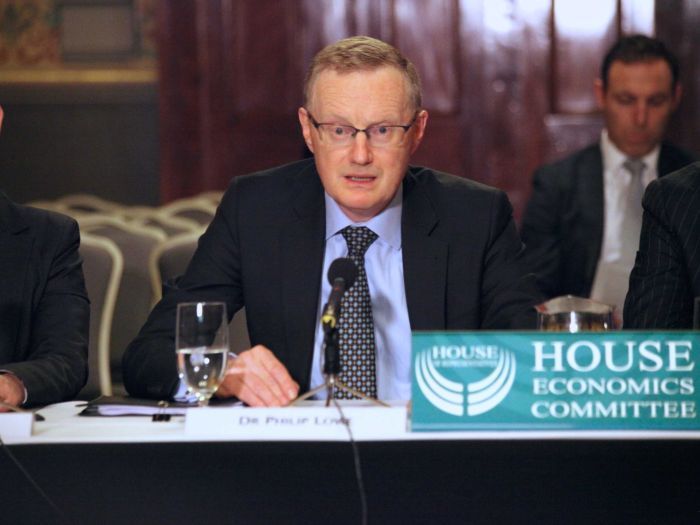RBA boss Philip Lowe says the Australian economy is at a “turning point” – and he has delivered a veiled message to the government.
Reserve Bank Governor Philip Lowe has issued a thinly veiled message to the government – “please do more.”
Dr Lowe told the government’s Economics Committee in Canberra this morning the Australian economy was at a “turning point”, as he outlined the RBA’s latest forecasts.
Those forecasts include a prediction that economic growth will be lower than previously expected. The RBA now predicts GDP growth of 2.5 per cent this year, rising to 2.75 per cent next year.
Inflation will remain below the RBA’s target for some time, unemployment will stay above 5 per cent, and upward pressure on wage growth will continue to be “quite modest”.
Dr Lowe blamed the revisions on weak consumption growth at the domestic level and the “major uncertainty” internationally as a result of the trade war between China and the United States.
“It has become increasingly clear that the extended period of unusually slow growth in household incomes has been weighing on household spending,” he said.
He said caps on wage growth in the public sector were contributing to the problem, and a pick-up in wages would be “both affordable and desirable” – while conceding it was “a bit controversial” for him to say such things in public.
I can understand why governments are doing that (imposing wage caps), because it’s important they have budget discipline,” Dr Lowe said.
“On the other hand, the wage caps in the public sector are cementing low wage norms across the country. The norm is now 2-2.5 per cent, and largely that’s coming from the decisions being taken by the state governments.”
There is only so much the RBA itself can do to help. With the cash rate at a record low of 1 per cent, it has very little room to move.
With that in mind, Dr Lowe pushed the government to consider two possible methods to stimulate the economy – either more infrastructure spending, or structural policy changes.
“One option is for fiscal support, including through spending on infrastructure,” Dr Lowe said.
“Spending on infrastructure not only adds to demand in the economy but, done properly, it can boost the economy’s productivity. It can also directly improve the quality of people’s lives through reducing congestion and improving services.
“At the moment, there are some capacity constraints in parts of the infrastructure sector, but these should not prevent us from looking for further opportunities to boost the economy’s productive capacity and support domestic demand.
“There is no shortage of finance to do this, with interest rates the lowest they have ever been. This week, all governments in Australia can borrow for 10 years at less than 2 per cent.”
Hint, hint.
The other, structural approach would involve policy changes to support firms expanding, innovating and employing more people.
“It’s very much linked to the issue of productivity. What do we do to lift productivity growth in this country?” Dr Lowe said.
Productivity growth has dropped off sharply in recent years. Dr Lowe nominated a number of policy areas where improvements could be made, including the way land is taxed, the incentives for innovation and entrepreneurship in the tax system, competition policy, skills and education, and the use of data by government to drive better delivery of services.
“There’s no shortage of ideas across those various areas,” he said.
Asked whether increasing the Newstart allowance would help the economy, Dr Lowe confirmed it would increase aggregate demand. However he said that benefit had to be balanced against the cost to the federal budget.









